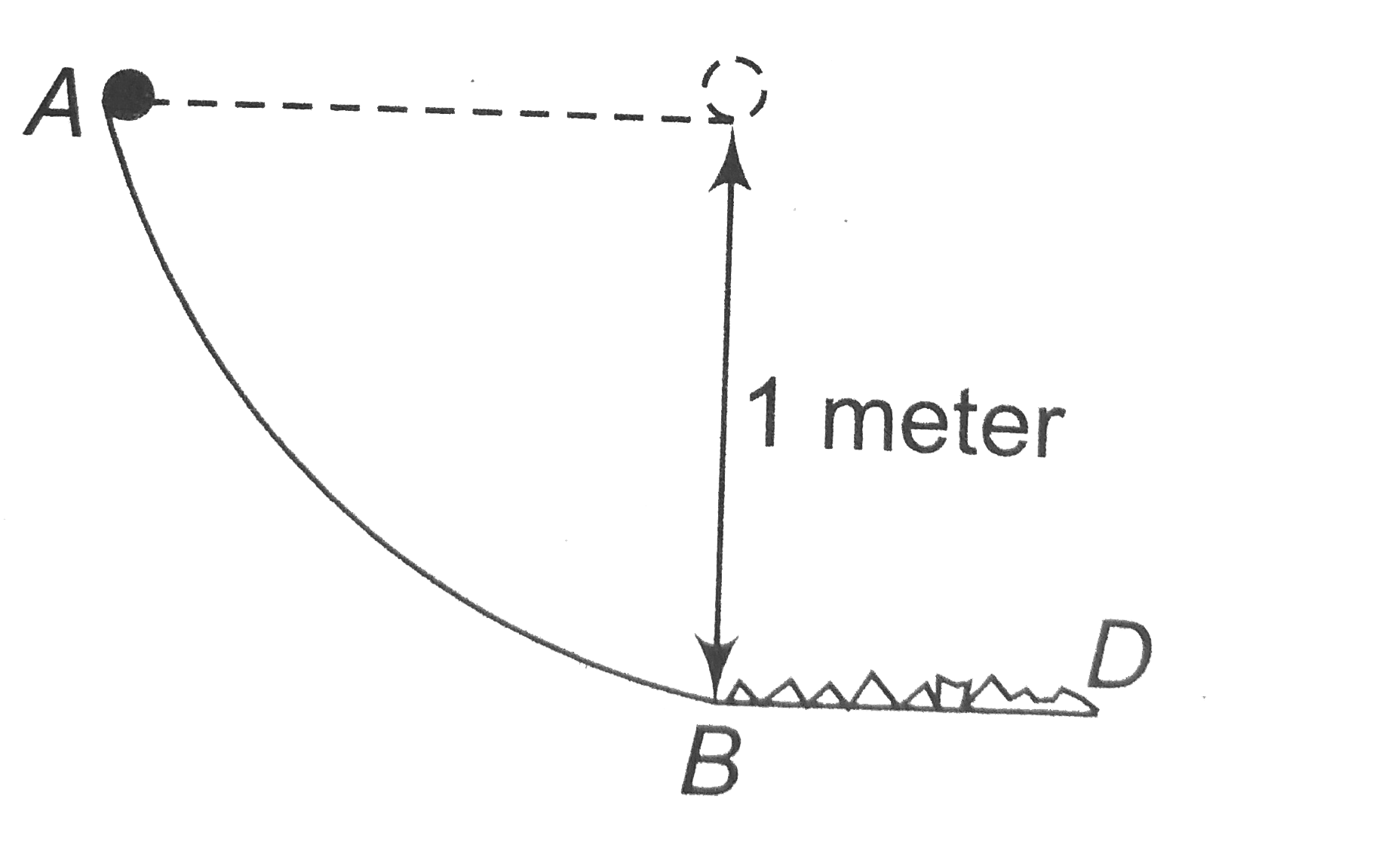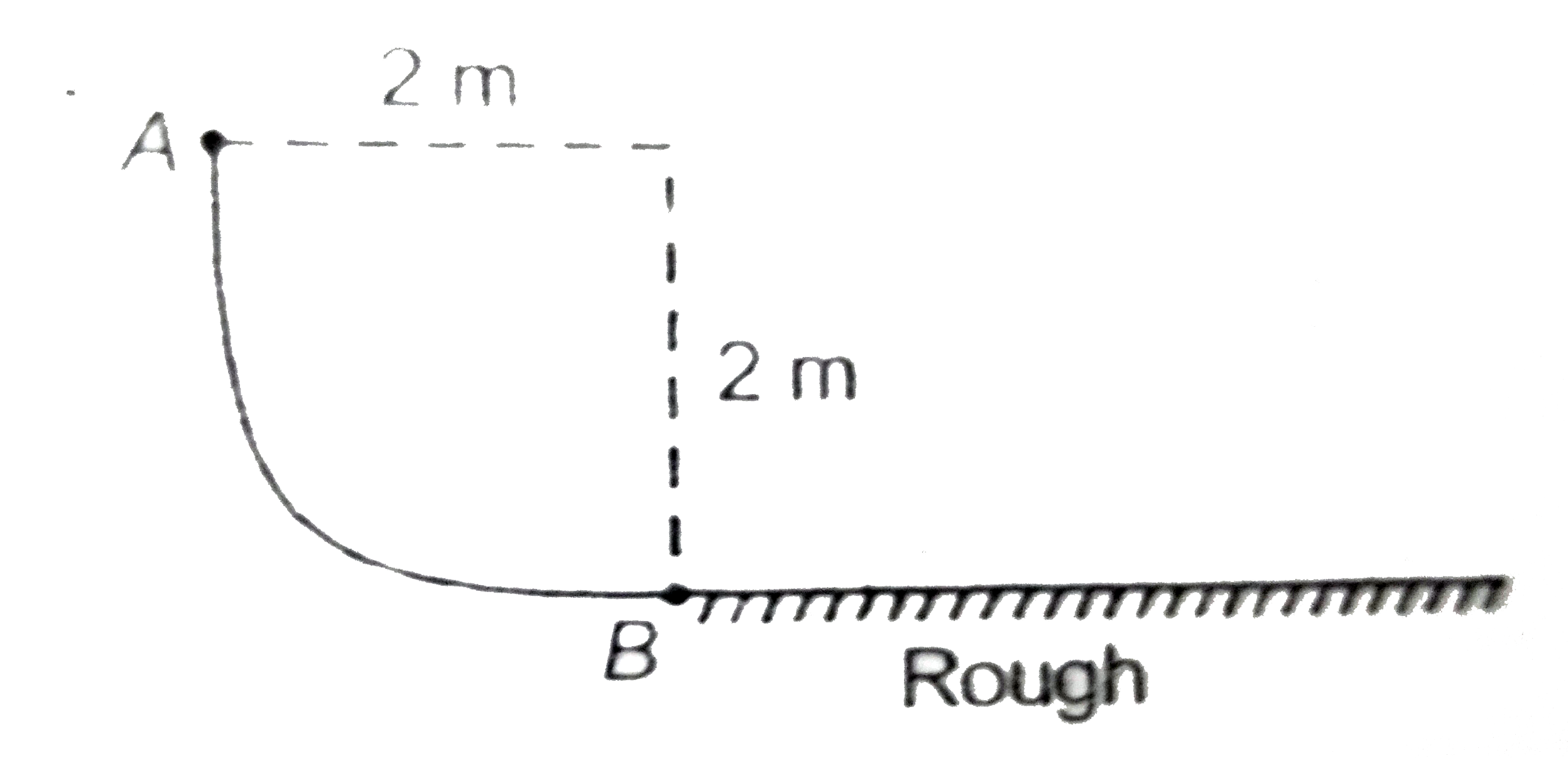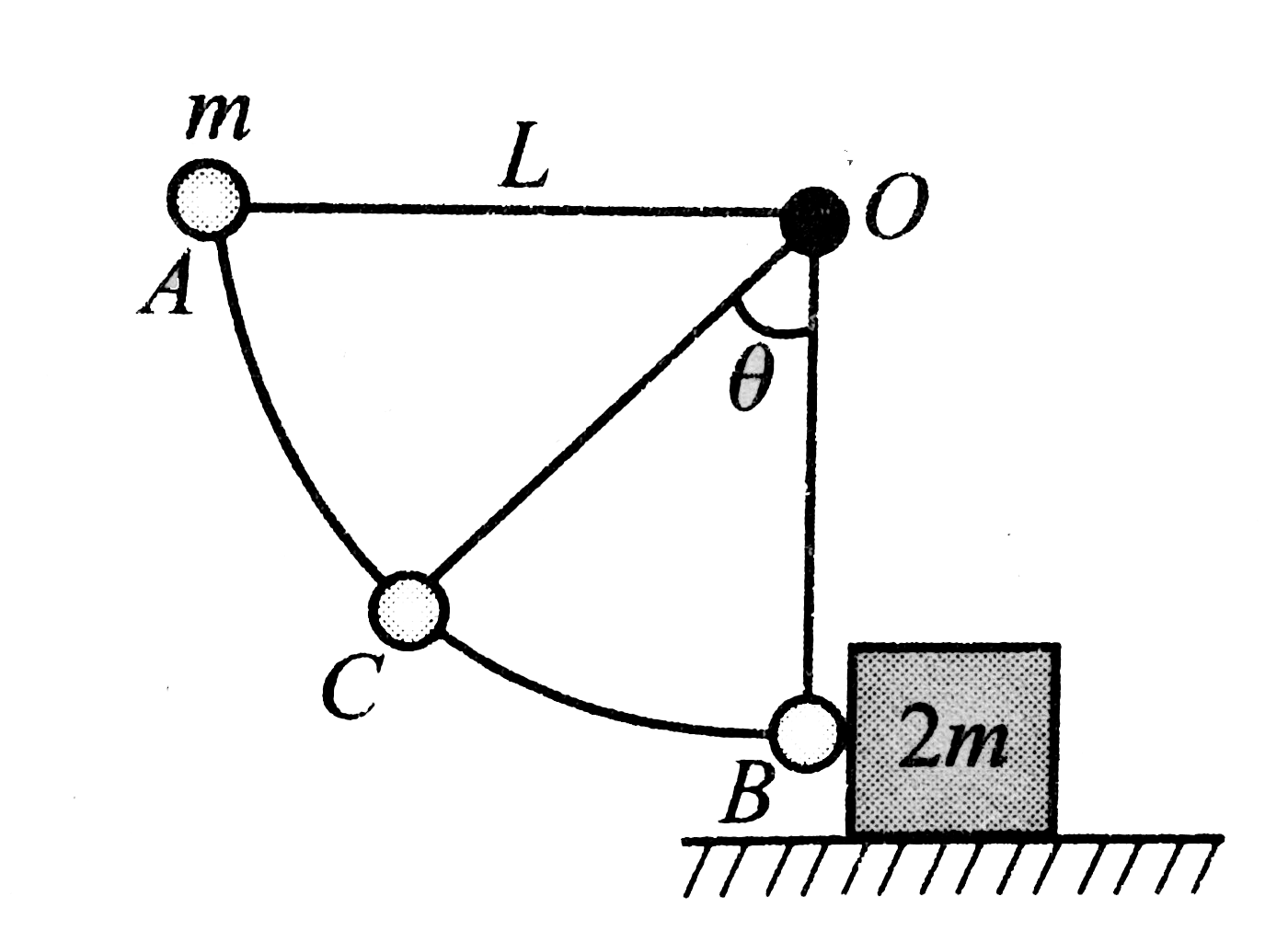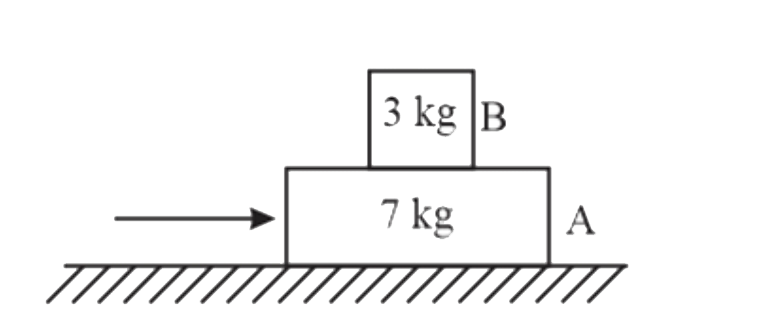In the track shown in figure section AB is a quadrant of a circle of 1 meter radius. A block is released at A and slides without friction until it reaches B. After B it moves on a rough horizontal floor and comes to rest at distance 3 meters from B. What is the coefficient of friction between floor and body?

The correct Answer is:[.21,−5.28J]
Step by step video, text & image solution for In the track shown in figure section AB is a quadrant of a circle of 1 meter radius. A block is released at A and slides without friction until it reaches B. After B it moves on a rough horizontal floor and comes to rest at distance 3 meters from B. What is the coefficient of friction between floor and body? by Physics experts to help you in doubts & scoring excellent marks in Class 11 exams.
Updated on:21/07/2023Topper's Solved these Questions
- LINEAR MOMENTUM & ITS CONSERVATIONBOOK - PHYSICS GALAXY - ASHISH ARORACHAPTER - LINEAR MOMENTUM & ITS CONSERVATIONEXERCISE - exercise 1.3
3 Videos
- LINEAR MOMENTUM & ITS CONSERVATIONBOOK - PHYSICS GALAXY - ASHISH ARORACHAPTER - LINEAR MOMENTUM & ITS CONSERVATIONEXERCISE - Advance McQ
20 Videos
- KINEMATICSBOOK - PHYSICS GALAXY - ASHISH ARORACHAPTER - KINEMATICSEXERCISE - Unsolved Numerical Pro.
83 Videos
- NEWTONS LAWS OF MOTIONBOOK - PHYSICS GALAXY - ASHISH ARORACHAPTER - NEWTONS LAWS OF MOTIONEXERCISE - Unsolved Numerical Problem
81 Videos
Similar Questions
A block is released at A and slides on smooth surface in shape of quarter circel. The horizontal part is rough if the block comes to rest 1.0 m away from B, then what is the coefficient of kinetic friction?

View SolutionA block of mass m is released on the top of a smooth inclined plane of length x and inclination θ as shown in figure. Horizontal surface is rough. If block comes to rest after moving a distabce d on the horizontal surface, then coefficient of friction between block and surface is :-

View Solution
Knowledge Check
In the track shown in figure section AB is a quandrant of a circle of 1 metre redius. A block is released at A and slides without friction until it reaches B. After B it moves on a rought horizontal floor and comes to rest at distance 3 meters from B. What is the coefficient of friction between floor and body?
 A1/3B2/3C1/4D3/8
A1/3B2/3C1/4D3/8In the track shown in figure -3.94 section AB is a quadant of a circle of 1 metre radius in vertical plane. A block is released at A and slides without friction until it reaches at B. After B it moves on a rough horizontal floor and comes to rest at D, 3 metres from B the coefficient of friction between floor and the body will be :
 A1/3B2/3C1/4D3/8
A1/3B2/3C1/4D3/8A block slides with a velocity of 10 m/s on a rough horizontal surface. It comes to rest after covering a distance of 50 metre. If g is 10m/s2, then the coefficient of dynamic friction between the block and the surface is
A0.1B1C10D5
A body freely released from A slides down a smooth inclined plane 'AB' and then a rough incline plane 'BC' such that BC = N (AB). If the block comes to rest at C, then coefficient of kinetic friction between the block and inclined plane is?
View SolutionIn figure shown minimum mass of block B( at a particular angle between horizontal and string AP) to just slide the block A on rough horizontal surface is m2 as shown in figure. If μ is the coefficient of friction between block A and ground then pμ2 will be :

View SolutionA body is moving along a rough horizontal surface with an initial velocity 6m/s m If the body comes to rest after travelling 9 m , then the coefficient of sliding friction will be
View SolutionA ball of mass m is attached to a cord of length L, pivoted at point O, as shown in Fig. The ball is released from rest at point A, swings down and makes an inelastic collision with a block of mass 2m kept on a rough horizontal floor. The coefficient of restitution of collision is e=2/3 and coefficient of friction between block and surface is After collision, the ball comes momentarily to rest at C when cord makes an angle of θ with the vertical and block moves a distance of 3L/2 on rough horizontal floor before stopping. The values of μ and θ are, respectively,

View SolutionTwo blocks A and B are placed one over the other on a smooth horizontal surface. The maximum horizontal force that can be applied on the lower block A, so that A and B move without separation is 49N. The coefficient of friction between A and B is (take g = 9.8ms−2 )

View Solution
